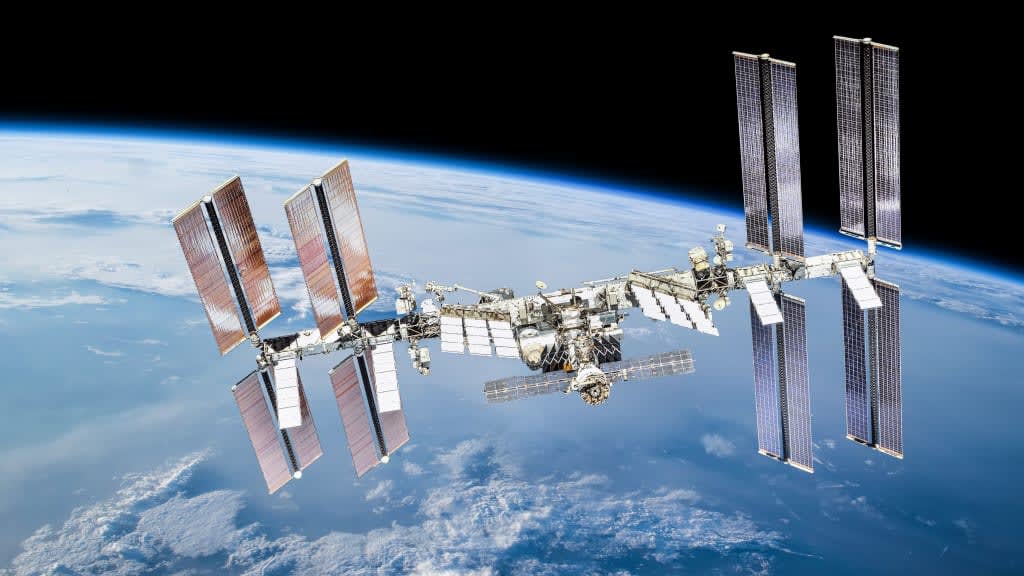
The International Space Station (ISS) is a marvel of modern science and international cooperation. Orbiting approximately 420 kilometers (260 miles) above the Earth, the ISS serves as a symbol of human discovery and collaboration, as well as a platform for basic research in the microgravity environment.
Origin of ISS:
The story of the ISS In the early 1990s, the world's space agencies came together to envision a permanent space station that could serve as a hub for scientific experiments, technology development, and international cooperation. In 1998, construction began on the ISS, the start of an extraordinary journey.
Global business:
ISS is not the work of one nation, but a collaboration between five space agencies: NASA (USA), Roscommon (Russia), ESA (European Space Agency), JAXA (Japan Aerospace Exploration Agency) and CSA (Canada). Space Agency). This multinational effort demonstrates the power of diplomacy and common purpose in space exploration.
ISS in orbit:
ISS is a complex structure consisting of many interconnected modules, laboratories, habitats and solar arrays. It orbits the Earth at an average speed of 28,000 kilometers (17,500 miles) per hour and completes one orbit every 90 minutes. This fast orbit allows astronauts on the station to witness approximately 16 sunrises and sunsets each day.
Life on the ISS:
Living on the ISS is a unique experience. Astronauts in the station must adapt to microgravity, which means they can float freely in the station's module. To prevent muscle and bone loss due to weight, astronauts exercise regularly and follow a carefully planned diet.
The ISS is equipped with an advanced life support system to recycle almost all water used by the crew and produce oxygen through electrolysis. This system allows astronauts to work long-term on the station for months at a time.
Scientific research on the ISS:
One of the main goals of the ISS is to conduct scientific research in a microgravity environment. This research spans many disciplines, including biology, physics, chemistry, and Earth science.
Microgravity allows scientists to perform experiments that cannot be done on Earth. For example, the study of protein crystallization in microgravity has led to the development of new drugs, and research into the effects of microgravity on the human body has informed medical science.
The ISS also serves as an Earth observation platform, allowing astronauts to capture stunning images of our planet. These images contribute to our understanding of the earth's climate, weather patterns, and natural disasters.
International Cooperation and Diplomacy:
The ISS is not only a laboratory in space, but also a testament to the power of international cooperation. The space station has weathered political tensions on Earth and continues to function as a symbol of unity among nations. This spirit of cooperation is important for the success of future efforts in space exploration, including missions to the Moon and Mars.
The future of the ISS:
The ISS has been in continuous operation since the arrival of Expedition 1 in November 2000, but the future is uncertain. NASA and its international partners are exploring options for the future, including transitioning from commercial involvement and government control to a more sustainable model.
Looking to the future, the ISS remains a beacon of scientific discovery and international collaboration. It paved the way for future missions beyond low Earth orbit and inspired generations of scientists, engineers and dreamers to reach for the stars.
As a result:
The International Space Station represents the pinnacle of human achievement in space exploration and international cooperation. This is a testament to what can be achieved when nations come together to achieve a common goal. Research on the ISS has huge implications for science, medicine, and our understanding of the universe.
As the ISS continues to orbit our planet, it reminds us of what we can achieve when we work together in education and research. The legacy will live on, paving the way for our journey into space and inspiring future generations to reach for the stars.
About the Creator
Talha RJ
I JUST WANT TO GIVE YOU GUYS INFORMATION ABOUT SPACE AND MANY MORE THINGS THAT ARE HAPPENING AROUND US BUT JUST WE HAVE TO FOCUS ON THAT AND THAT IS WHY I AM AT YOUR SERVICE.






Comments
There are no comments for this story
Be the first to respond and start the conversation.